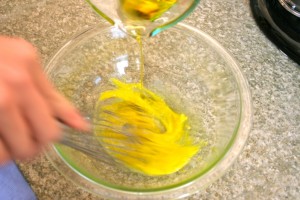There’s a self-congratulatory culture within self-titled food advocates who care more about food porn than microbial safety – the things that make people barf.
 And why The New Times is becoming increasing irrelevant (and please, stop sending me those thrice daily e-mails about the latest subscription special).
And why The New Times is becoming increasing irrelevant (and please, stop sending me those thrice daily e-mails about the latest subscription special).
Columnist Mark Bittman, advocate of many microbiologically dubious practices – I wonder if he’s has ever used a thermometer – writes that Alice Waters is probably the most important American in food.
Bittman writes he wasn’t surprised to see her making the aioli — garlic mayonnaise to serve with the fish and its accompaniments — in the most inefficient and old-fashioned way possible: using a mortar and pestle to mash the garlic, a fork to whip up the emulsion and no lemon juice, vinegar or any other acid at all. It was the best mayonnaise I’ve ever tasted, but then again, she did use a wonderfully perfumed olive oil.
And probably a raw egg.
Consumer shell egg consumption and handling practices: results from a national survey
Journal of Food Protection®, Number 7, July 2015, pp. 1250-1419
Kosa, Katherine M., Cates, Sheryl C., Bradley, Samantha, Godwin, Sandria, Chambers, Delores
http://www.ingentaconnect.com/content/iafp/jfp/2015/00000078/00000007/art00010
Abstract:
Numerous cases and outbreaks of Salmonella infection are attributable to shell eggs each year in the United States. Safe handling and consumption of shell eggs at home can help reduce foodborne illness attributable to shell eggs.
A nationally representative Web survey of 1,504 U.S. adult grocery shoppers was conducted to describe consumer handling practices and consumption of shell eggs at home. Based on self-reported survey data, most respondents purchase shell eggs from a grocery store (89.5%), and these eggs were kept refrigerated (not at room temperature; 98.5%). As recommended, most consumers stored shell eggs in the refrigerator (99%) for no more than 3 to 5 weeks (97.6%). After cracking eggs, 48.1% of respondents washed their hands with soap and water. More than half of respondents who fry and/or poach eggs cooked them so that the whites and/or the yolks were still soft or runny, a potentially unsafe practice. Among respondents who owned a food thermometer (62.0%), only 5.2% used it to check the doneness of baked egg dishes the they prepared such a dish. Consumers generally followed two of the four core “Safe Food Families” food safety messages (“separate” and “chill”) when handling shell eggs at home.
To prevent Salmonella infection associated with shell eggs, consumers should improve their practices related to the messages “clean” (i.e., wash hands after cracking eggs) and “cook” (i.e., cook until yolks and whites are firm and use a food thermometer to check doneness of baked egg dishes) when preparing shell eggs at home. These findings will be used to inform the development of science-based consumer education materials that can help reduce foodborne illness from Salmonella infection.
